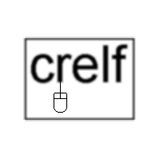Using polymorphic VI as data selector for a Var_Tag array data type
-
Similar Content
-
Control Name from Variant Data - Value Change Event
By bbean,
- traverse g0bjects
- variant data
- (and 1 more)
- 3 replies
- 2,444 views
-
- 5 replies
- 3,620 views
-




Recommended Posts
Join the conversation
You can post now and register later. If you have an account, sign in now to post with your account.